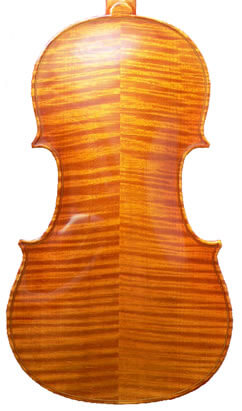good question. here is what i found and the link:
http://www.phrases.org.uk/meanings/spitting-image.html
Meaning
The exact likeness.
Origin

One of the very first questions at the
Phrasefinder bulletin board (7 years and 50,000 postings ago) asked about 'spitting image'. There have been numerous queries since and the latest this week (Aug 2006) asked if the term was originally 'splitting image', i.e. deriving from the two matching parts of a split plant of wood. That's a plausible-sounding idea. The mirror-image matching grain of split wood has long been used in furniture and musical instruments for decorative effect. The technique is known as book-matching and resulting pattern is called fiddleback - for obvious reasons. The theory has had its adherents for some time and dates back to at least 1939, when Dorothy Hartley included it in her book
Made in England:
"Evenness and symmetry are got by pairing the two split halves of the same tree, or branch. (Hence the country saying: he's the ‘splitting image’ - an exact likeness.)"
As so often though, plausibility isn't the end of the story. The numerous forms of the term 'spitting image' - spit and image, splitting image, spitten image, the dead spit of, spirit and image etc., appear not to derive from 'split' but from 'spit'. The allusion is to someone who is so similar to another as to appear to have been spat out by him.
The phrase in any form isn't especially old. The earliest reference that is known is in Andrew Knapp and W. Baldwin's
The Newgate Calendar, 1824–26:
"A daughter, ... the very spit of the old captain."
This pre-dates any 'splitting image' citation by a good hundred years, which tends to rule out the latter as the source. That use of spit or 'dead spit' to mean likeness appears in print several times in the 19th century. Here dead means precise or exact, as it does in
dead ringer.
Toward the end of the 19th century we get 'spit and image'. In 1895 and author called E. Castle published
Lt. of Searthey, containing the line:
"She's like the poor lady that's dead and gone, the spit an' image she is."
The first appearance of 'spitting image' is in A. H. Rice's
Mrs. Wiggs, 1901:
"He's jes' like his pa - the very spittin' image of him!"
,Arnold Bennett used 'spitten image' in
Clayhanger in 1910:
"A nice-behaved young gentleman, and the spitten image of his poor mother."
The idea that spit may be a corruption of 'spirit' appears to be fanciful. There's certainly no evidence to support that.



 One of the very first questions at the
One of the very first questions at the 


 Threaded Mode
Threaded Mode
